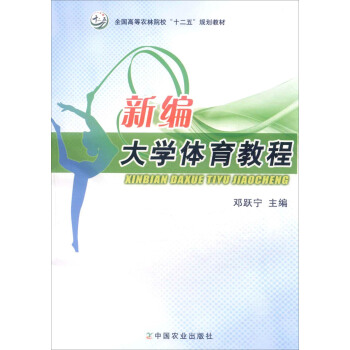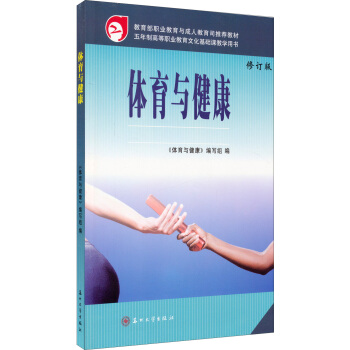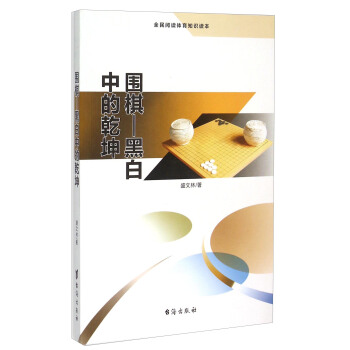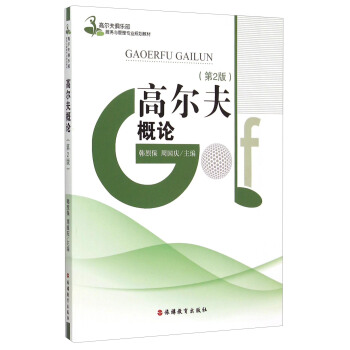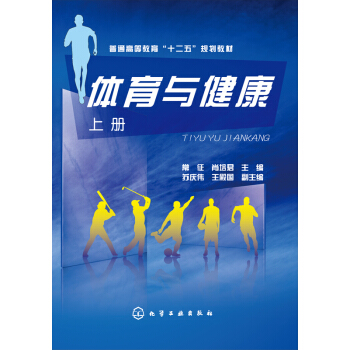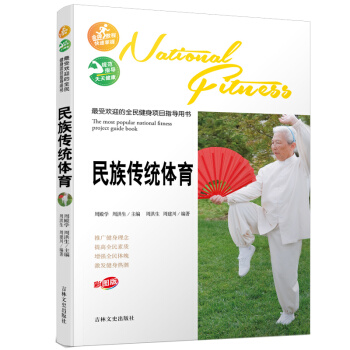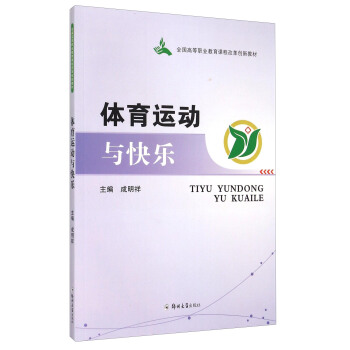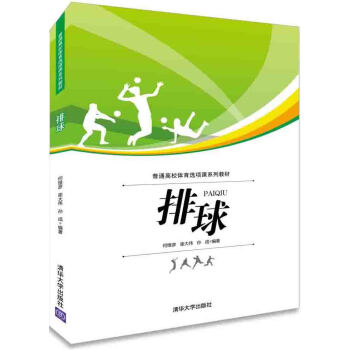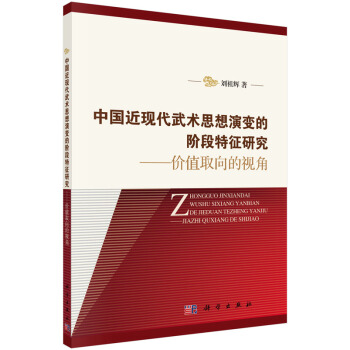

具体描述
内容简介
思想是思维活动的结果。人们的社会存在,决定人们的思想。从思想层面考察近代以来武术发展、演变的动因,有利于揭示当今武术改革发展中遇到的深层次问题。由于思想本身就是以价值观念为核心的理性认识,历史上武术思想的发展演变往往根植于价值取向的变化。对于武术价值认识上的差别并导致产生相对不同的武术价值观念,是武术思想演变研究中要回答的深层次问题。本书运用文献资料研究法、调查访问法、历史学法、比较法等研究方法,按时间发展的顺序,分阶段将武术从属性价值、功能价值、文化意蕴价值三个价值层面分别进行研究,全面考察了各个时期以武术价值为核心的武术思想演变的特征,为近现代武术发展及武术理论研究提供新视角。目录
序
前言
第一章导论001
第一节武术思想研究的社会背景001
一、传承与推广中国文化的需要001
二、武术自身发展的需要003
第二节研究相关问题的说明005
一、武术思想概念的界定005
二、时间的界定007
三、研究视角的界定007
四、研究方法008
第三节武术价值取向视角的哲学基础011
第四节相关学科研究的文献综述013
一、关于武术思想的研究013
二、有关武术价值的研究015
第五节本书的创新点017
第二章以“武侠豪情思想”为核心的武术多元化价值取向阶段019
第一节武侠豪情——晚清武术文化意蕴价值的核心020
一、关于武侠与武侠思想020
二、晚清武侠思想发展的新特征021
三、平民社会中的武侠思想022
四、革命党人的武侠思想024
五、海外华侨的武侠思想028
六、文艺作品中武侠思想的传播030
第二节属性价值取向——民间结社组织反抗运动的工具033
一、武术在农民革命斗争中的地位033
二、武术在清军中的地位036
第三节晚清武术功能价值的特征038
一、娱乐与艺术价值038
二、健身与修身价值039
第四节本章小结041
第三章以“尚武思想”为核心的武术多元化价值取向阶段044
第一节尚武思想——民国时期武术文化意蕴价值的核心044
一、尚武的由来044
二、近代尚武思想的新特征——论中华民族的尚武精神046
三、军国民教育时期的尚武思想048
四、民族复兴思潮中的尚武思想054
第二节武术科学化思想——武术功能价值取向的深入认识059
一、武术健身价值观060
二、武术教学、竞赛价值观062
第三节属性价值取向063
第四节本章小结064
第四章以“体育武术思想”为核心的武术功能价值取向的阶段066
第一节“体育武术”的思想066
一、“体育武术”思想产生的时代背景066
二、“体育武术”思想产生的内部因素068
第二节竞技武术的发展071
第三节社会武术的发展072
第四节武术价值取向思想的碰撞:属性价值与功能价值073
第五节本章小结077
第五章以“民族精神教育思想”为核心的武术多元化价值取向阶段078
第一节民族精神教育——武术文化意蕴价值取向078
第二节武术功能价值取向081
第三节武术属性价值取向的回归083
第四节本章小结084
第六章以“申奥思想”为核心的武术功能价值取向阶段085
第一节武术申奥——竞技武术一枝独放085
一、我国竞技体育的崛起及其影响085
二、关于武术必须进入奥运会的思想087
三、关于武术以什么形式进入奥运会的争论089
第二节竞技武术的大发展094
一、国内竞技武术的发展094
二、竞技武术的国际发展096
第三节学校武术的困境096
第四节传统武术的困境098
第五节本章小结101
第七章以“人文武术思想”为核心的武术多样化价值取向重构阶段103
第一节人文武术——现代武术文化意蕴价值取向103
一、“人文武术”思想提出的缘由104
二、人文武术的现代内涵114
第二节武术功能价值的深入探索130
第三节武术属性价值的追求131
第四节本章小结132
第八章近现代中国武术思想演变的历史经验134
第一节武术思想演变归根结底由现实的社会变革所决定134
第二节文化意蕴价值是武术价值的核心136
第三节多元化价值取向协调发展能有效推动武术健康发展137
第四节新世纪武术价值取向的调适:社会价值与个体价值141
一、武术社会价值取向历史渊源141
二、现代竞技武术是武术社会价值取向的强化143
三、以传统武术为代表的武术个体价值取向144
结论148
参考文献150
精彩书摘
第一章导论第一节武术思想研究的社会背景
中国武术源远流长,千百年的发展,随历史的更替,每个时期的武术实践都形成了不同的武术思想。“思想是思维活动的结果。属于理性认识。一般也称作观念。人们的社会存在,决定人们的思想。”辞海编辑委员会.辞海[M].上海:上海辞书出版社,2000:2027.因此,这些思想的变化更替,代表了各个时期人们对武术的认识。“认识的任务在于把握事物的本质,目的是指导实践 其中一个重要的方面就是了解事物的作用和价值。”袁贵仁.价值学引论[M].北京:北京师范大学出版社,1991:46.并且,人们对客观世界的认识总是包含着既有联系又有区别的事实认识和价值认识两个方面。历史上武术思想的演变体现着人们对武术价值的选择与取向。但是,长期以来,博大精深的武术思想总是蕴藏于人类纷繁复杂的武术活动中,人们对武术价值的选择大多停留于感性认识层面。面对东西方文化交融加剧,科技迅猛发展的新时代,武术的发展如何顺应时代的需求,何去何从,成为亟待解决的问题。故从价值取向入手,对武术思想演变进行深入探索和系统研究具有重大的理论价值和现实意义。
一、传承与推广中国文化的需要
21世纪是全球化的时代,全球化的迅猛发展,促进了不同区域文化的交融与碰撞。文化是一个民族的灵魂和血脉,是一个民族的精神记忆和精神家园。体现了民族的认同感、归属感,反映了民族的生命力、凝聚力。如果一个国家丧失了自己国家的民族文化特点,那么它就失去了其全部的智慧和文明,失去了这个民族真正的根基。文化成了综合国力的重要组成,也是增强综合国力的重要力量,当今世界激烈的综合国力竞争,不仅包括经济、科技、国防实力等方面的竞争,也包括文化实力和民族精神的竞争。“在这个文化的世界上,我们时时感受着并亲身参与着某种‘文化力’的相互作用。这个文化的世界是历史形成多样性的存在,是多种文化共存的世界 不同文化的相互作用中,势均力敌极为罕见,更常见的则是强势文化和弱势文化的区分。从理论上讲,我们可能更倾向于认为各种文化都要平等存在和发展的权利。但理论上的平等不能消除事实上的不平等,文化世界中的领导权或霸权的存在与作用是一个不容回避的事实。”孙晶.文化霸权理论研[M].北京:社会科学文献出版社,2004:1.维护文化安全,可以说是一个民族一个国家维护生存和发展的最后底线,这是一个生死选择的问题。“对中国而言,不仅文化逆差问题十分突出,而且文化安全任务十分繁重。据统计,文化的进出口比例大约是14∶1。因此加强中国文化的对外辐射能力已是当务之急,任重道远,我们应当为此做出不懈努力。”郭建宁.当前文化研究若干前沿问题论析[J].新华文摘,2006,17:113136.同时,由于“构成文化的独特性、特殊性从而获得延续性的基本要素是渗透于人们思想行为之中的文化传统 传统以广泛的价值认同为文化共同体战胜内忧外患提供思想纽带,以深厚的文化底蕴为新文化的生长提供知识资源,以鲜明的个性为文化共同体在全球化时代抵御外来文化的同质化提供精神支撑。”田丰.论文化竞争力[J].新华文摘,2006,13:108110.
所以说,我们不仅要善于继承与吸取中国优秀传统文化、借鉴与学习外国的先进文化,还要善于向世界推广中华民族的先进文化,以让世界了解我们文化的优秀宝贵之处。
在博大宏富、源远流长的祖国传统文化中,中华武术是一枝奇葩。武术不仅具有精深的哲学思想、系统的技击理论、完整的锻炼系统和神奇的健身与攻防效果,而且与多种文化形态均有着相互渗透的密切关系。“武术文化属于整个中华文化巨系统中的一个具有显著特色的子系统。”旷文楠等.中国武术文化概论[M].成都:四川教育出版社,1990:1.
长期以来,武术在海外的发展传播,使得武术技术及其所根植的中国传统文化也逐渐被越来越多的外国朋友所认识与喜爱。武术在国外已经形成一定的市场。在外国友人的眼中武术已经幻化为中国人的一种生存方式、中国文化的一种象征。那么,“利用西方对武术的好奇和神秘心态,从我国的文化战略和国家利益的角度,规划武术的当代生产,就可能成为我们反对文化帝国主义和抵制西方和平演变的途径之一。”康戈武,邱丕相.从文化好奇到文化战略[J].体育文化导刊,2004,6:1213.还要加强武术文化的宣传和传播。“从国际范围来看,宣传和传播武术,是反对国际文化霸权,积极参与构建国际文化新秩序的需要。宣传和传播武术,也许让世界人们了解东方文化、了解中国、了解中国人的过程。是武术逐渐被西方接受的过程。宣传和传播武术,还是使武术从中国现象变为世界现象,乃至全球化的过程。”康戈武,邱丕相.从文化好奇到文化战略[J].体育文化导刊,2004,6:1213.
中国武术的思想理论、方法在数千年的流传中,经历了历史的选择,形成了自己独特的具有中华民族特色的文化体系。由于“文化是价值存在的形态。文化的深层是思维方式与价值观念。思维方式是文化的核心,而文化是价值观念和思维方式的表现形式。”王玉樑.当代中国价值哲学[M].北京:人民出版社,2004:6.研究武术思想演进,理清武术思想发展的脉络,不仅可以知古论今,更可以为新世纪武术文化的发展找到历史思想根基。“因为中国武术需要继承,更需要发展,它所面临的是如何实现一种古老的文化向现代化转换的问题。因此,中国武术也就必须进行自我认识、反思、改革和更新,必须勇敢地面对一种新的价值判断和整体认识。这种改革和更新的过程都是一个科学研究的过程”。旷文楠等.中国武术文化概论[M].成都:四川教育出版社,1990:11.“而任何科学的研究都是不断合乎规律的历史过程的继续,也就是拿过去作为出发点来构思现代的模式,或是在过去和现在的研究基础上创构未来的模式。换句话说,对现实问题的确切把握有赖于对过去历史的深刻理解,而对未来发展的预测又必须基于整个历史和现实的广泛研究。”陈融.新中国体育思想发展的研究[D].上海:上海体育学院,1999:2.正是基于这些认识,本书研究近现代中国武术思想的演进,希望在思想观念上帮助人们进行价值定向,提供历史经验和理论滋养,以推动武术文化的发展,促进民族文化的传播。
二、武术自身发展的需要
1.中华武术博大精深,长期以来一直是人们健身、养生的重要手段
随着现代中西方文化交流的深入。特别是影视媒体促进武术的传播,功夫片的兴起,在国内外掀起了一股“武术热”,人们在学武术、练武术的同时,也促进了武术的传播。然而,时代的发展,人们生活水平的提高,国外休闲体育的引进,人们可选择进行的休闲娱乐、参加体育锻炼健身的手段与方式越来越多。人们参加运动不再满足一种身体锻炼,更多的是希望在运动中得到身心的放松,运动的同时得到一种文化的体验。在这种情况下,拥有几千年历史的传统武术正在年轻一代中国人心中逐渐失去应有的地位。与此相反,跆拳道、空手道等舶来品却在中国许多地方不断升温,并已成为很多都市年轻人强身健体的首选,甚至成为一种时尚标志。2005年4月1日《中国青年报》的一则报道更是引发众人关注,“人大(人民大学)武术协会推出传统武术免费班,却无人问津。而在北京东二环沿线不到两千米、租金极昂贵的区域,却聚集了超过4家跆拳道馆,且家家门庭若市。在北京东直门外某跆拳道馆门口有这样一条广告语:学习跆拳道,体验中国武术精神。”当各类规模不一的跆拳道馆如雨后春笋般出现在都市各处时,中国传统武术馆正在逐渐淡出人们的视野。这条广告语也正在传递着这样一个事实——曾经号称有亿万习武人口的中国,此时其最有创造力和潜在价值的人群却是在依靠跆拳道体验传统武术精神。如今,在社会上能看到能用武术当作锻炼手段而学武术、练武术的,恐怕只剩下公园里白发苍苍的老人练太极拳的身影。武术在广大群众中的普及与发展遇到了前所未有的困难。
2.学校是武术的推广、发展及普及的重要阵地
自从近代武术进入学校,成为学校体育课程以来,改变了武术原来家族式、个体式的口传身授,极大地推动了武术的普及。经过近百年的发展,学校武术形成了一整套的教学教育模式,武术运动也成为学生喜闻乐见的体育项目。然而,随着时代的变迁,人们生活方式的转变,学校武术教学虽然历经几次改革却收效甚微,武术教材陈旧,教学模式老化,这些直接导致学校武术教育的萎缩和武术课在越来越多的学校黯然退让,造成“学生喜欢武术,不喜欢上武术课”的尴尬局面。教育事关作为文化战略的武术事业的全局,发展武术教育,是武术文化建设的基础工程。2004年4月3日,中共中央宣传部和教育部联合颁发了《中小学开展弘扬和培育民族精神实施纲要》(简称“《纲要》”)。为中小学开展弘扬和培育民族精神、加强爱国主义教育指明了方向。《纲要》指出,“各学科有机渗透民族精神教育,把弘扬和培育民族精神纳入中小学教育全过程,贯穿在学校教育教学的各个环节、各个方面”。作为民族文化一部分的武术,其中蕴涵着丰富的爱国主义、和平、勇敢、自强不息等民族精神。因此,《纲要》也指出“体育课应适量增加中国武术等内容”。因此,我们要从武术教材、武术教师等方面入手对武术课程进行全方位的改革,从根本上改变由于因教材内容和教师的业务能力等方面的问题而引发的学生“喜欢武术,不喜欢武术课”等现状。
3.北京申奥的成功,为武术这一我国民族传统体育项目进入奥运大舞台带来了前所未有的机遇
武术运动的改革要适应奥运设项的要求,必须首先从立法及武术竞赛规则入手,加强竞赛的可比度,促进武术运动的全面发展。正是在这种情况下,1996年出版的武术套路竞赛规则中,增加了“指定动作”与“创新难度”的规定,要求各竞赛套路中必须包括规定的指定动作,并通过难度动作加分的手段鼓励各运动队创新难度动作。然而,多年来有关难度动作的改革总离不开“翻、腾、旋”动作,由此而引起武术界不少争议,有人认为过于提倡空翻和旋转会导致“中国式体操”之嫌,并且这显然与奥运要求的独特性不相符。因此,有人从武术运动的本质出发,认为在武术向外推广与普及时应以散打等技击技术为主,以充分发挥武术的本质特征。那种更像是一套体操的竞赛武术套路却丧失了它原本具有的技击类运动项目的本质属性。尤其是在提出竞技武术力争进入奥运会的口号后,人们对弘扬传统武术和保持新编武术的传统特色,表现出了极大的关注。“一些人当心,很多濒临失传的传统武术拳种和武功,可能在我们这一代人手中消失;还当心新编武术项目失去传统特色后会沦为武舞,或者异化为自由搏击。”康戈武.传统武术期待腾飞之日[J].中华武术,2002,11:4446.
因此,面对新时期武术的改革与发展,我们必须深刻反思“武术是否能够担当起弘扬民族优秀文化的重任”、“学校武术教育如何突破困境”、“武术的传播和推广的模式与道路”等问题。对于这些问题,本书试图从武术思想观念的层面进行思考,以期找到合理的答案。这不仅因为武术实践总是有一定的思想根源,还由于各种外部因素,如政治、经济等,总是通过影响人们的思想观念这个中介起作用。因此,从思想的高度入手,有利于揭示武术改革发展中的深层次问题。由于思想本身就是以价值观念为核心的理性认识。历史上武术思想的发展演变往往根植于价值取向的更新,对于武术价值认识上的差别并导致产生相对不同的武术价值观念,是武术思想演变研究中要回答的深层次问题。中国武术思想演变研究对完善武术理论体现,进一步推动武术的发展普及具有一定的理论意义和现实意义。
第二节研究相关问题的说明
一、武术思想概念的界定
(一)思想
思想是思维活动的结果。属于理性认识。一般也称作观念。人们的社会存在,决定人们的思想。一切根据和符合于客观事实的思想是正确的思想,它对客观事物的发展起促进作用,反之,则是错误思想,它对客观事物起阻碍作用。辞海编辑委员会.辞海[M].上海:上海辞书出版社,2000:2027.“思想”按照一般常识性的用法,可分为三个阶段:第一是指日常范围内个人考虑到的某种想法;第二是指经过深思熟虑而被汇集起来的见解;第三是指统一原理下的教义和理论。
(二)武术思想
武术界目前对“武术思想”一词尚未有过明确统一的定义。但其他学科对思想的研究已经较为成熟。在关于思想研究领域中,理解其他学科思想研究概念的界定,可以为全面把握武术思想的定义提供借鉴。
社
前言/序言
用户评价
The title "A Study on the Stage Characteristics of the Evolution of Chinese Modern and Contemporary Martial Arts Thought: From the Perspective of Value Orientation" suggests a deeply analytical and historically grounded exploration. I'm particularly drawn to the promise of understanding the "stage characteristics," which implies a systematic breakdown of the evolution of martial arts thought into distinct historical phases. This methodology promises a clear and organized presentation of complex historical developments, allowing for a focused examination of the unique intellectual and philosophical currents prevalent in each period. The "value orientation" perspective is what truly excites me. It indicates that the book will not simply chronicle events but will delve into the underlying reasons and motivations behind the changes. I anticipate an exploration of how societal values, cultural priorities, and even political ideologies have shaped the development and perception of Chinese martial arts throughout the modern and contemporary eras. For instance, I'm curious to learn how concepts like national pride, individual self-improvement, or the pursuit of physical health have been emphasized and reinterpreted at different historical junctures. This lens suggests a nuanced understanding of how martial arts have served as a mirror to the evolving aspirations and concerns of Chinese society. I am looking forward to a scholarly work that provides a profound insight into the intellectual landscape of Chinese martial arts and its deep connection to broader historical and philosophical trends.
评分The title "A Study on the Stage Characteristics of the Evolution of Chinese Modern and Contemporary Martial Arts Thought: From the Perspective of Value Orientation" immediately signals a scholarly and in-depth exploration, moving beyond a mere chronicle of techniques to delve into the philosophical underpinnings of Chinese martial arts. The phrase "stage characteristics" suggests a well-defined historical framework, where the author has identified distinct phases in the evolution of martial arts thought. I'm intrigued to learn how these phases are delineated and what defining features characterize each one. It hints at a systematic approach, dissecting the historical trajectory into manageable and understandable segments, allowing for a focused analysis of the intellectual shifts within each period. The "value orientation" aspect is particularly captivating. It promises an examination of the underlying principles, ideals, and societal expectations that shaped martial arts practice and philosophy across different eras. I'm eager to understand what was considered important – what virtues were emphasized, what goals were pursued, and how these values evolved in response to China's tumultuous modern and contemporary history. For instance, how did the nationalistic fervor of certain periods influence the emphasis on martial arts as a symbol of strength and cultural pride? Conversely, in times of relative peace and prosperity, did the focus shift towards health, self-cultivation, and philosophical exploration? This perspective suggests that the book will offer more than just historical facts; it will explore the meaning and purpose that martial arts held for people in different times, revealing the complex interplay between culture, society, and individual belief systems. I anticipate a rigorous academic work that provides a nuanced and insightful understanding of the evolution of Chinese martial arts thought.
评分读到《中国近现代武术思想演变的阶段特征研究:价值取向的视角》这个书名,我的内心涌起一股强烈的求知欲。这似乎不是一本只讲套路和招式的武术书籍,而是要深入探讨武术背后那些看不见的精神内核,而且是围绕着“价值取向”这个非常宏观的视角展开。我猜想,作者一定对近现代中国社会剧烈的变革有着深刻的洞察,并且能够将这种宏观的历史进程与武术思想的微观演变巧妙地联系起来。我对“阶段特征”这个词尤其感兴趣,它预示着这本书会将近现代武术思想的发展划分为几个清晰的时期,并详细分析每个时期所呈现出的独特面貌。我迫不及待地想知道,在那些风起云涌的年代,武术作为一种重要的民族文化符号,是如何在不同的政治、经济、文化环境下被重新解读和塑造的。比如,我想了解在那个“天足”的时代,武术的普及程度和受众群体是怎样的?又或者,在战争年代,武术的实战价值是否被格外强调,从而催生出更具攻击性的技术体系?而到了和平年代,武术会不会更多地回归其健身、养生、修身养性的传统功能?“价值取向”的视角则更是点睛之笔,它让我意识到,这本书并非简单地罗列事实,而是要探究在不同时期,人们对于武术的“期待”和“追求”发生了怎样的变化。是追求民族复兴的强大力量,还是个人修身养性的淡泊宁静?是强调技艺的精湛,还是品德的高尚?这些内在的价值判断,一定深刻地影响了武术的发展方向和形式。这本书,在我看来,将是一次对中国近现代思想史的别样解读,而武术,将成为理解这一时期社会思潮变迁的重要窗口。我准备好沉浸在这场思想的盛宴中,去感受中国武术在时代洪流中的每一次呼吸和每一次蜕变。
评分When I first saw the title "A Study on the Stage Characteristics of the Evolution of Chinese Modern and Contemporary Martial Arts Thought: From the Perspective of Value Orientation," a complex tapestry of historical imagery unfurled in my mind. It speaks to a profound engagement with not just the physical manifestations of martial arts but, more importantly, with the underlying philosophical currents that have guided their development through a tumultuous period in Chinese history. The phrase "stage characteristics" immediately conjures up the idea of distinct epochs, each with its own intellectual climate and societal imperatives that shaped how martial arts were conceived, practiced, and propagated. I envision the author meticulously dissecting these periods, highlighting the unique ideological flavors of each. Perhaps the late Qing dynasty saw a focus on martial arts as a means of national defense against foreign encroachment, emphasizing strength and martial prowess. Then, the Republican era might have witnessed a re-evaluation, with intellectual movements questioning tradition and potentially leading to a more codified, almost scientific approach to martial arts, or conversely, a romanticized revival of older traditions. The post-revolution period, with its emphasis on mass mobilization and physical fitness, would likely present another distinct set of "stage characteristics." The "value orientation" aspect is what truly sets this title apart for me. It suggests an in-depth exploration of the why behind these changes. What did people value in martial arts during these different times? Was it the pursuit of personal virtue and ethical conduct, the preservation of cultural heritage, the enhancement of physical health, or the development of combat effectiveness? I anticipate that the book will delve into how these values shifted, sometimes subtly and sometimes dramatically, influencing the very curriculum, teaching methods, and philosophical discourse surrounding martial arts. This isn't just about chronicling the evolution of techniques; it's about understanding the evolving soul of martial arts, intricately linked to the shifting moral compass and societal aspirations of China. I'm expecting a scholarly yet accessible journey that will illuminate the intellectual landscape of modern China through the lens of its most iconic physical discipline.
评分The title "A Study on the Stage Characteristics of the Evolution of Chinese Modern and Contemporary Martial Arts Thought: From the Perspective of Value Orientation" immediately piqued my interest by promising a scholarly investigation into the evolution of martial arts philosophy, particularly through the lens of shifting values. The phrase "stage characteristics" suggests a structured approach, dividing a significant historical period into distinct phases. I'm keen to understand what defines these stages and how the author delineates them. This implies a careful, analytical approach that will likely examine the unique ideological currents present in each era. What were the dominant ideas and beliefs that shaped martial arts during these different periods? The "value orientation" aspect is particularly compelling. It suggests that the book will delve into the fundamental principles and ideals that underpinned martial arts practice and theory, and how these changed over time. I'm expecting to explore how societal needs, philosophical trends, and cultural imperatives influenced the perceived purpose and practice of martial arts. For instance, how did the drive for national modernization and strength in certain periods influence the development of more systematic or scientifically approached martial arts? Conversely, did periods of introspection lead to a greater emphasis on inner cultivation and philosophical depth? This perspective suggests a nuanced exploration that goes beyond mere description, aiming to uncover the deeper ideological currents that powered the evolution of Chinese martial arts thought. I anticipate a comprehensive and insightful study that will offer a fresh understanding of this complex subject.
评分Upon seeing the title, "A Study on the Stage Characteristics of the Evolution of Chinese Modern and Contemporary Martial Arts Thought: From the Perspective of Value Orientation," I was immediately drawn to the promise of a comprehensive historical analysis that transcends mere descriptions of techniques. The phrase "stage characteristics" indicates a structured approach to understanding the evolution of martial arts thought, suggesting that the author has identified distinct developmental phases within the modern and contemporary periods of Chinese history. I'm eager to learn how these stages are defined and what intellectual or social factors serve as their markers. This implies a deep dive into the nuances of each period, highlighting their unique contributions and transformations. The "value orientation" perspective is particularly intriguing. It signals an intent to explore the underlying ideals, beliefs, and ethical frameworks that have guided the development of martial arts throughout these eras. I anticipate a thorough examination of how societal priorities and cultural aspirations have shaped the purpose and practice of martial arts. For example, how did the concept of national strength and revival in the early 20th century influence martial arts training and ideology? And how did later periods, perhaps focused on mass physical culture or individual well-being, reorient these values? This approach promises to illuminate the intellectual and philosophical shifts that have occurred, offering a richer, more insightful understanding of how martial arts have evolved as a reflection of Chinese society itself. I’m prepared for a scholarly journey that will shed light on the deeper meaning and purpose behind the physical practices.
评分The title, "A Study on the Stage Characteristics of the Evolution of Chinese Modern and Contemporary Martial Arts Thought: From the Perspective of Value Orientation," immediately ignites my curiosity. It promises a scholarly exploration into the intellectual history of Chinese martial arts during a period of immense societal transformation. The emphasis on "stage characteristics" suggests a structured approach, dividing the evolution into distinct phases, each with its own unique ideological fingerprint. I'm eager to understand how external forces – political upheavals, foreign influences, and technological advancements – interacted with internal traditions to reshape martial arts philosophy. For instance, how did the decline of imperial rule and the rise of new ideologies affect the perceived purpose and practice of martial arts? Did it transition from a tool of personal protection and social order to something else entirely? The "value orientation" lens is particularly compelling. It implies that the book will not merely describe the what of martial arts development but will delve into the why – the evolving ideals and beliefs that underpinned these changes. I'm anticipating an examination of how concepts like national strength, cultural identity, physical fitness, self-discipline, and even spiritual cultivation were prioritized and interpreted differently across various historical periods. Was there a period where martial arts were primarily seen as a means to forge national character, or a time when its therapeutic and health benefits took center stage? The title suggests a nuanced understanding that goes beyond superficial observations, delving into the very core of what made martial arts meaningful to people at different junctures in history. I'm looking forward to a thorough and insightful analysis that will offer a fresh perspective on both the history of martial arts and the intellectual currents of modern China. This is precisely the kind of deep dive I appreciate in a historical study, promising to uncover the subtle yet significant shifts in the underlying principles that guided this ancient art.
评分Reading the title "A Study on the Stage Characteristics of the Evolution of Chinese Modern and Contemporary Martial Arts Thought: From the Perspective of Value Orientation," I immediately felt a pull towards a deeper understanding of how this multifaceted art form has navigated the complexities of China's modern and contemporary history. The mention of "stage characteristics" implies a structured, chronological investigation, likely breaking down this broad period into discernible epochs. I'm curious to see how the author defines these stages – what criteria are used to differentiate them? Are they marked by significant political events, major shifts in societal attitudes towards martial arts, or perhaps the emergence of influential new schools of thought? This approach suggests that the book will offer a coherent narrative, tracing the development of martial arts philosophy through a series of distinct developmental phases. The "value orientation" lens is what truly elevates this title for me. It signals a commitment to exploring the "why" behind the changes, rather than just the "what." I'm eager to discover how the ideals and principles guiding martial arts practice have shifted over time. For example, I anticipate learning about periods where martial arts were primarily viewed as a means of national defense or as a tool for social order, and contrasting this with eras where the emphasis might have leaned towards personal well-being, philosophical inquiry, or even artistic expression. This perspective promises a nuanced exploration of how societal values, cultural aspirations, and even philosophical trends influenced the very essence and direction of Chinese martial arts thought. I foresee a scholarly work that will provide a rich and insightful understanding of this vital aspect of Chinese culture.
评分Upon encountering the title, "A Study on the Stage Characteristics of the Evolution of Chinese Modern and Contemporary Martial Arts Thought: From the Perspective of Value Orientation," my mind immediately gravitated towards the intellectual and philosophical shifts that must have occurred within Chinese martial arts during the dynamic modern and contemporary eras. The phrase "stage characteristics" suggests a meticulously segmented historical analysis, wherein distinct periods are identified and their unique ideological landscapes are brought to the fore. I'm particularly keen to explore how the profound societal changes in China – from the fall of the last imperial dynasty to the establishment of the People's Republic and beyond – directly impacted the very conceptualization and practice of martial arts. Did the emphasis shift from individual self-preservation in a fragmented society to a collective pursuit of national strength? Or perhaps a move from purely combative applications to a more holistic approach encompassing physical and mental well-being? The "value orientation" perspective is, to my mind, the linchpin of this study. It implies a deep dive into the evolving ideals and ethical frameworks that guided martial artists and their patrons. What values were championed and preserved? Were they rooted in ancient Confucian virtues, Daoist philosophies, or perhaps influenced by emerging modern ideologies like nationalism or scientific rationalism? I'm anticipating a detailed examination of how societal priorities and moral imperatives shaped the martial arts, influencing their purpose, pedagogy, and even their perceived social role. This isn't merely a chronicle of techniques; it's a scholarly investigation into the very soul of martial arts, tracing its philosophical evolution through the lens of changing societal values. I am eager to gain a profound understanding of how this ancient art adapted and transformed, reflecting the broader intellectual and cultural trajectory of modern China.
评分这本书的书名叫做《中国近现代武术思想演变的阶段特征研究:价值取向的视角》,看到这个名字,我脑海里立刻浮现出历史的长河,武术,这个承载着民族精神的古老技艺,在近现代的浪潮中是如何潮起潮落,又如何涅槃重生的。我仿佛看到那些武术大师们,在时代变迁的洪流中, grappling with existential questions – what is the true essence of martial arts? Should it be preserved as a cultural heritage, or should it adapt to the modern world? The title suggests a deep dive into the philosophical underpinnings, the evolving values that shaped the practice and understanding of Chinese martial arts from the late Qing dynasty to the present day. I'm particularly intrigued by the "stage characteristics" aspect. This implies a chronological analysis, identifying distinct periods with their own unique ideological currents and how these currents influenced the martial arts. I'm eager to learn about the intellectual debates, the social contexts, and the philosophical shifts that marked these different stages. For instance, I can imagine the impact of Westernization and the rise of science on traditional martial arts, perhaps leading to a more systematic, even analytical approach to training and philosophy. Conversely, I also anticipate exploring how nationalism and a desire to reclaim cultural identity might have fueled a resurgence of interest in martial arts as a symbol of strength and resilience. The "value orientation" lens is also a crucial element. It suggests the author isn't just describing historical events but is delving into the "why" behind the changes – the shifting moral compass, the changing societal expectations, and the evolving ideals of what constitutes a "good" martial artist and, by extension, a "good" person in different historical epochs. I'm expecting to see how concepts like discipline, honor, self-cultivation, and even combat effectiveness were redefined and prioritized across these stages. This isn't just a history of techniques; it's a history of thought, of ideology, and of the very soul of Chinese martial arts. I’m bracing myself for a rigorous academic exploration, likely filled with nuanced arguments and detailed historical evidence, and I’m ready to be educated and enlightened.
相关图书
本站所有内容均为互联网搜索引擎提供的公开搜索信息,本站不存储任何数据与内容,任何内容与数据均与本站无关,如有需要请联系相关搜索引擎包括但不限于百度,google,bing,sogou 等
© 2025 book.idnshop.cc All Rights Reserved. 静思书屋 版权所有

